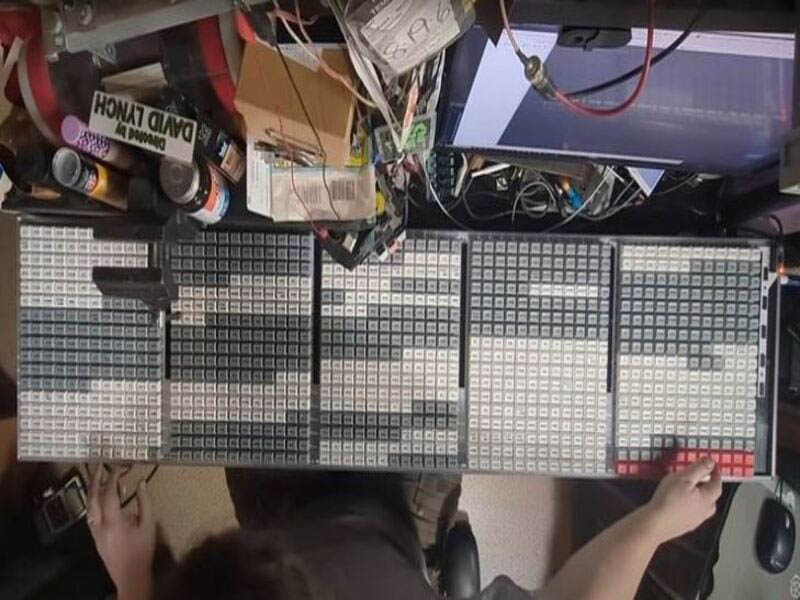
Unique Keyboard in the World Has 1,020 Keys, Doesn't Use Letter Symbols
Tech by Android – The Unique Keyboard in the World That Features 1,020 Keys
Most keyboards available today feature a standard layout consisting of symbols, numbers, and letters arranged in the familiar “QWERTY” format. The number of keys varies depending on size, but most keyboards have around 100 keys. However, a YouTuber named Attoparsec has created a keyboard unlike any other. Instead of having the usual hundred or so keys, his custom-built keyboard boasts a staggering 1,020 keys.
Attoparsec’s inspiration for this remarkable invention came from Randall Munroe’s webcomic titled Up Goer Five. The comic explains rocket science using only the 1,000 most commonly used words in English. Following this concept, the keyboard replaces individual letters with full words instead.
“Read more : WhatsApp Lets Users Show Links of Other Social Media Accounts in Profiles“
This unusual keyboard consists of five massive panels, each containing dozens of keys. Unlike conventional keyboards, every key represents a frequently used English word rather than a single letter. The arrangement is alphabetical, making it easier to locate specific words. Some words included on the keyboard are “Group,” “Grow,” “Head,” and “Here.” These are among the most common words used in daily communication.
To enhance usability, Attoparsec also included 20 additional keys designed for affixes. These special keys modify words, adding context and meaning to sentences. This approach makes sentence formation more straightforward, albeit unconventional.
Each key is approximately one inch in size, regardless of word length. Longer words are split into two lines and connected with a hyphen. For instance, the word “Situation” appears as “Situa-tion” on the keyboard. This ensures consistency in key sizes while maintaining readability.
Constructing this massive keyboard required meticulous effort. Attoparsec used dye sublimation printing to label each key with its corresponding word. This process involves transferring ink onto a surface using a special heat process. While it may sound simple, it took approximately six months to complete the entire keyboard. The time-consuming nature of the project stemmed from the sheer number of keys and the need for precise labeling.
Beyond its lengthy construction process, using the keyboard itself presents significant challenges. Since words replace individual letters, typing requires users to stretch their hands across the expansive layout. This unique design results in a typing experience vastly different from conventional keyboards.
“Read more : Myths and Facts About Radiation Nuclear: The Future of Radiation Protection“
One might assume that having whole words on each key would speed up typing. However, real-world testing proved otherwise. Attoparsec tested his typing speed using this innovative keyboard and managed to type only 13 words per minute. In contrast, a standard QWERTY keyboard typically allows users to type around 83 words per minute. The massive size and unfamiliar layout significantly slow down the process.
Despite its impracticality, this project serves as a fascinating experiment in alternative keyboard design. While it may not replace traditional keyboards anytime soon, it showcases the creative possibilities in keyboard innovation.
Although the concept of a word-based keyboard is intriguing, commercial viability remains questionable. The size, complexity, and slow typing speed make it impractical for daily use. However, this experiment highlights the potential for alternative input methods beyond conventional keyboards. Perhaps, with further refinement, similar designs could be adapted for niche applications.
Attoparsec’s 1,020-key creation pushes the boundaries of keyboard design. While it is not practical for mainstream use, it offers valuable insights into the possibilities of custom keyboard layouts. Innovations like this remind us that technology continues to evolve in unexpected ways.
For more interesting tech experiments like this, visit Tech by Android or check out techbyandroid.com for the latest updates on unique technological innovations.